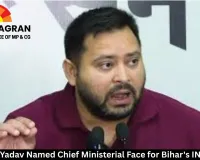India’s Bold Crackdown on Deepfakes: New IT Rules 2025 to Mandate Labels, 36-Hour Takedowns
Digital Desk
India is set to roll out the world’s toughest deepfake regulations under the amended Information Technology (IT) Rules, 2025, effective November 2025. The Ministry of Electronics and IT (MeitY) has finalized sweeping changes targeting synthetic AI-generated content, from celebrity deepfake videos to election-sabotaging misinformation.
The trigger? A viral deepfake of actress Rashmika Mandanna that shocked the nation and exposed the emotional trauma victims endure. “It felt like someone stole my identity,” Mandanna had said, galvanizing public and government outrage.
What the New Deepfake Laws Mandate
1. Crystal-Clear Definition: “Synthetically generated information” now legally covers any audio, video, or image artificially created or altered using AI to appear authentic.
2. Mandatory AI Watermarks & Labels:
- At least 10% of video screen space or the first 10% of audio playback must display “AI-Generated” warnings.
- Every file must embed metadata revealing origin, tools used, and edit history—like a digital DNA trail.
3. 36-Hour Takedown Rule: Platforms must remove unlawful deepfakes within 36 hours of government or court orders. Failure invites heavy penalties.
4. Senior-Level Oversight: Only Joint Secretary-rank officers can issue removal directives, with full legal justification, preventing arbitrary censorship.
Platforms Gain Safe Harbor—If They Comply
Social media giants, video hosts, and even AI tool providers (like deepfake generators) get liability shields only if they:
- Label content transparently
- Embed traceable metadata
- Act within the 36-hour window
Non-compliance? Platforms face direct accountability—fines, lawsuits, and potential bans.
Global Alignment, Indian Innovation
India’s framework mirrors the EU AI Act and China’s 2023 deepfake laws but adds unique consumer-facing warnings. “Think of it like cigarette pack health alerts—but for your newsfeed,” says Dr. Aarav Singh, AI ethics lead at NITI Aayog.
The rules also future-proof elections. With 2026 state polls looming, deepfakes posing as political leaders could sway millions. “One fake video can change an election,” warns cybersecurity expert Priya Menon.
Challenges Ahead: Tech, Trust, and Training
Experts flag hurdles:
- Detection Lag: Current AI struggles to spot hyper-realistic deepfakes.
- Platform Burden: Smaller apps may collapse under compliance costs.
- Free Speech Fears: Critics worry vague “unlawful” definitions could silence satire.
Yet, the government is betting on education + enforcement. MeitY has tied up with ed-tech firms to launch free AI Foundation Courses, teaching citizens to spot deepfakes and use tools ethically.
Bonus: India’s Quantum Leap
In a surprise pivot, the video spotlighted India’s National Quantum Mission—a ₹6,000 crore push to build quantum computers by 2030. “We’re regulating AI today, leading quantum tomorrow,” the speaker declared.
The Bottom Line
Starting November 2025, every deepfake video you see will scream its artificial origins. Platforms will scramble, creators will rethink, and citizens will scroll smarter. India isn’t just reacting to deepfakes—it’s rewriting the global playbook.





.jpg)
.jpg)
.jpg)
.jpg)
.jpg)
.jpg)
